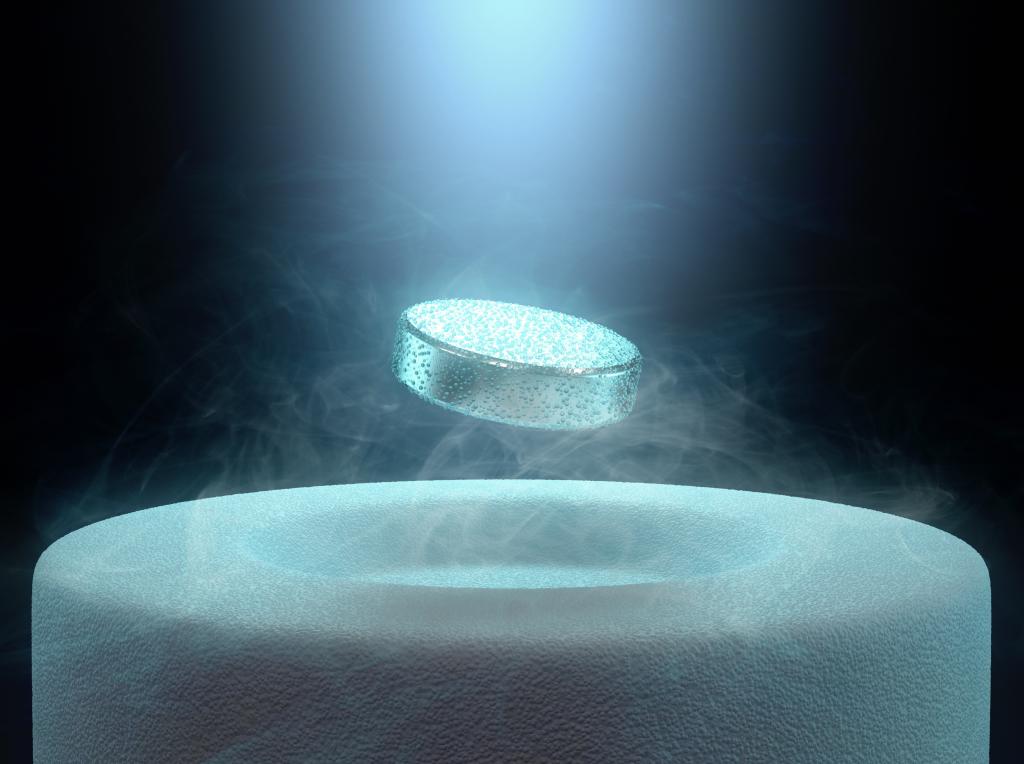 Image Credits: Rost-9D / Getty Images
Image Credits: Rost-9D / Getty Images
Just when you thought the hype about room-temperature superconductors was over, it’s not.
A Swiss quantum algorithm startup, Terra Quantum, and a research lab at the State University of Campinas (Unicamp) in Brazil claim that they have discovered a form of graphite that superconducts at ambient temperature and pressure.
Terra Quantum isn’t a small operation. The company raised $60 million early in 2022 for its quantum-as-a-service platform. But that doesn’t mean you should get your hopes up.
Room-temperature superconductors, if one is ever found and independently confirmed, could revolutionize everything from electricity transmission to computing, electric vehicles, MRI machines, maglev trains and more.
Lately, claims of room-temperature superconductivity seem to be blooming like flowers after a rainstorm. In the last year alone, three high-profile cases were either debunked, retracted or seriously doubted.
Consider this latest one to fall into the latter category. Researchers who TechCrunch+ spoke with were skeptical that this new material is a room-temperature superconductor.
“I want to believe, and I think it’s out there to be had,” said Jamil Tahir-Kheli, a senior staff scientist at Caltech. But “I found a lot of problems with the paper,” he said, adding that if he had been a referee on the peer-review article, “I would not have accepted it.”
The work was published in Advanced Quantum Technologies, a niche journal rather than one in the top-tier like Science or Nature, where other room-temperature superconductor claims have been published — and retracted. That’s not necessarily a strike against the work, but it does explain why it didn’t make a splash when it was first published on December 31. In fact, TechCrunch+ only found out about the paper when Terra Quantum’s PR reached out.
The material described in the paper isn’t new, per se, but rather a new configuration of graphite. The secret, the paper’s authors say, was getting the graphite to wrinkle in such a way that it creates rows of small ridges, along which superconducting currents can flow.
“It is very well known that if you have just a one-dimensional system, then superconductivity is not possible. But what helps now is these wrinkles,” Valerii Vinokur, Terra Quantum’s CTO for the United States and corresponding author on the paper, told TechCrunch+. This, coupled with a metallic layer, “stabilizes superconductivity,” he added.
Though Terra Quantum is almost entirely focused on the software side of quantum computing, CEO Markus Pflitsch said that the company is working on a few hardware projects, this being one of them.
To measure the superconductivity, the researchers placed 11 electrodes perpendicular to the wrinkles in the graphite and applied a direct current between the first and last leads. In the graphs that they use to help support their claims of superconductivity, the researchers noticed a sharp change in resistance in the current flowing between leads nine and 10.
That might be consistent with superconductivity, but more likely the results were spoiled by heat spilling into the graphite sample when the electric current was applied to lead 11, Tahir-Kheli said. By measuring for superconductivity at leads nine and 10, right next to lead 11, “how do you really know that your sample is at the temperature you think it’s at? You don’t,” he said. “I would have used [leads] four and eight.”
That heat might be especially problematic when testing a material like graphite. Slight temperature variations can cause a sudden wave of electrons changing positions, so to speak. (Technically speaking, with small changes in temperature the electrons shift between insulator and metallic states.) That surge of electrons might be mistaken for superconductivity, Tahir-Kheli said.
When the Terra Quantum and Unicamp researchers did measure drops in resistance, a hallmark of superconductivity, the drop was too sudden for Tahir-Kheli’s liking. If he saw something like that in his lab, he would have redone the experiment and taken more measurements in the area of interest over a longer period of time. That would help flesh out the true shape of the curve and help minimize any noise and error.
That doesn’t appear to have happened in this study. “I would have wanted to knock the error bars down as small as possible. And I would have wanted to see this whole curve,” Tahir-Kheli said.
Nor did the team appear to have run the experiments forward and backward, from high temperature to low temperature and back again. Doing so would have allowed the team to retrace their curve, and if there were no differences, be more confident that the results were due to some superconductivity effect rather than temperature differences within the material.
Lastly, there’s the question of why a quantum computing startup is pursuing a room-temperature superconductor in the first place. Pflitsch said that Terra Quantum sees great potential in superconducting quantum computers, though it will need new materials to realize it. “With standard superconductivity, we see it very challenging to scale it beyond, let’s say, 10,000 qubits,” he said.
A room-temperature superconductor would clearly be a breakthrough, though one that’s not necessarily beneficial to their core business today. Yet superconductors are not the real reason people want to keep quantum computers so cold. Rather, it’s their desire to eliminate noise generated by vibrating atoms, and cooling them near absolute zero helps quiet those quivers.
“Forget about the superconductors. They’re fighting thermal noise everywhere,” Tahir-Kheli said. “But you know, if you take two trendy buzzwords and put them together, it’s probably worth something right?”
Updated on January 30: After publication, Terra Quantum sent the following statement:
While scientific skepticism is expected regarding any new research discovery, the critique ignores several key points:Twenty years ago there were findings of room temperature localized superconductivity in graphite.It is textbook knowledge that resistance may drop sharply at superconductivity onset.There is near-perfect agreement between superconducting transitions from resistance and magnetization measurements.That heat does not cause resistance to drop is ignored.The discovery of high-temperature superconductivity by Bednorz and Müller was published in a niche journal yet was recognized with a Nobel Prize.Valerii Vinokur, the project lead, is a laureate of International John Bardeen and Abrikosov Prizes, and Fritz London Memorial Prize.



